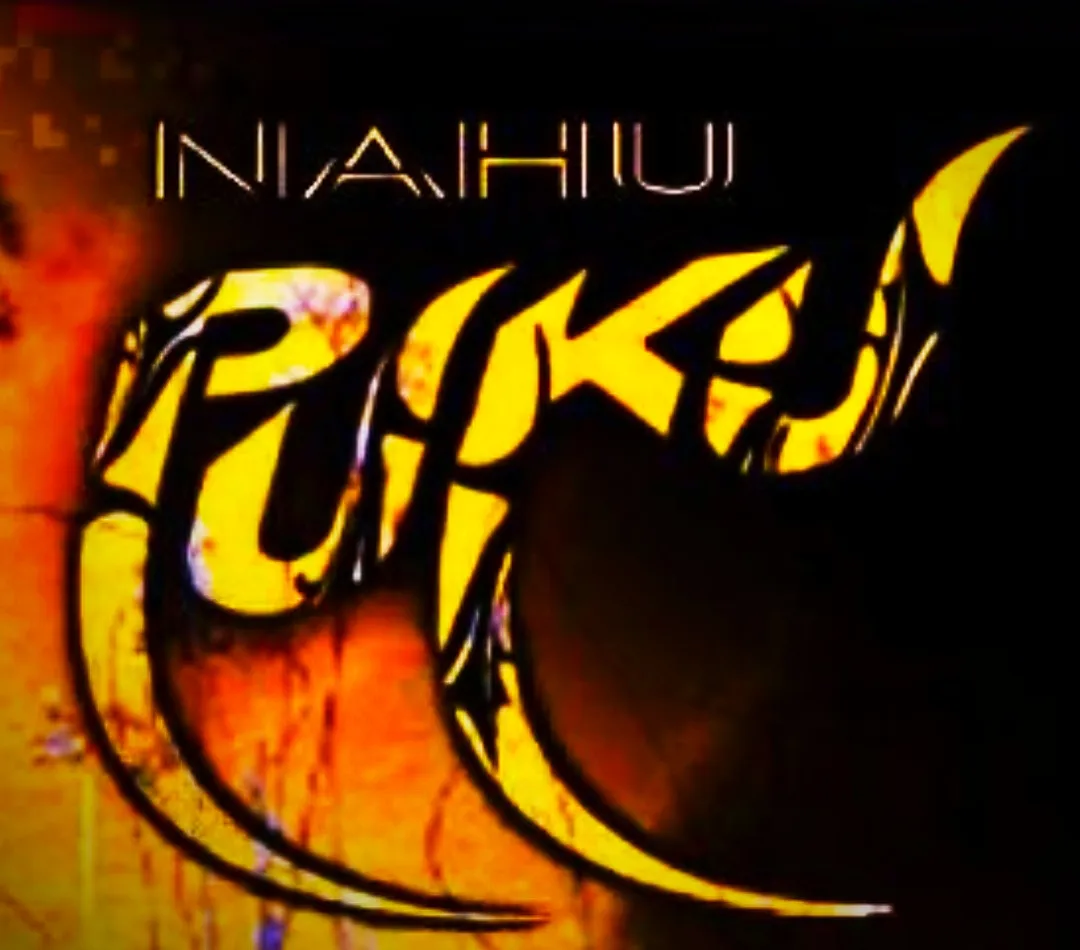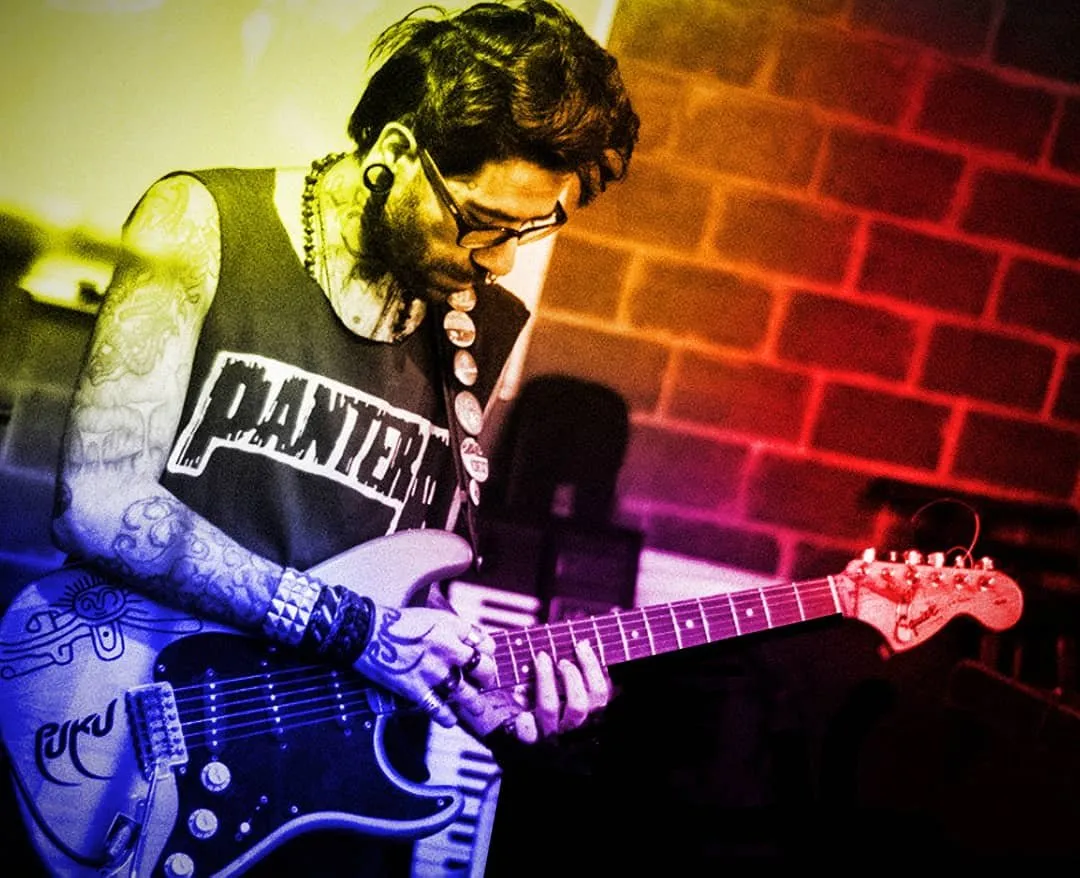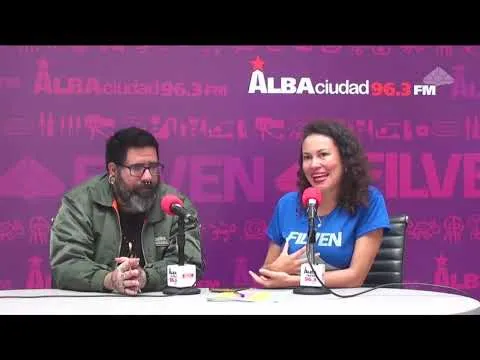Entrevista a Nahu Padilla Puku - Feria Internacional del Libro de Venezuela, Filven 2025 - Moderadora: Angie Velez.
Photos:
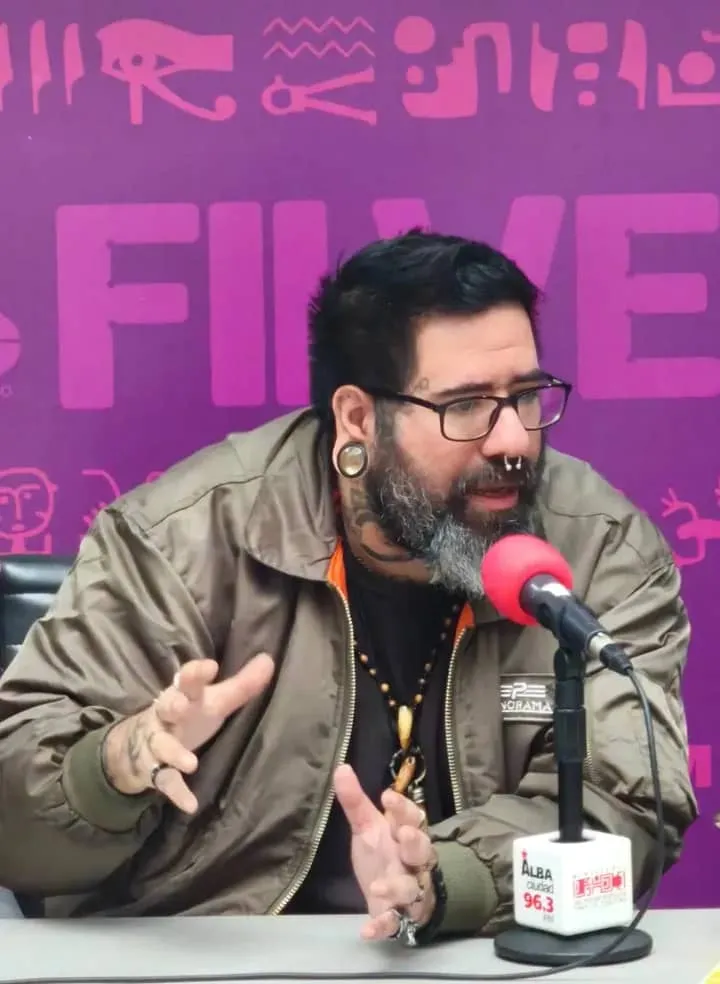

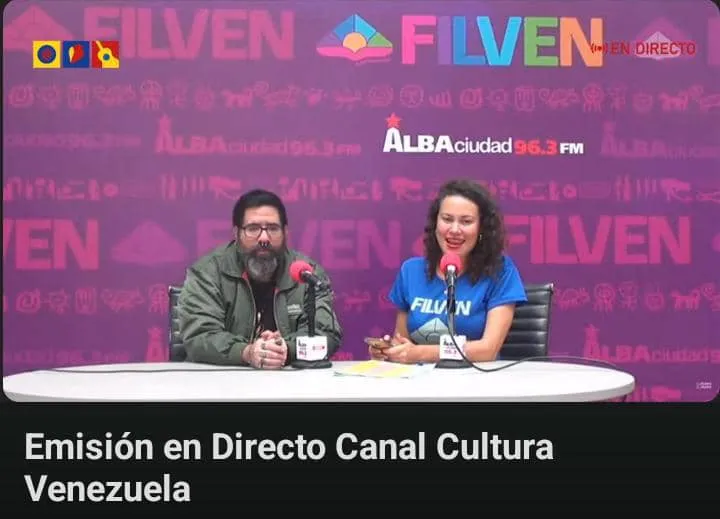
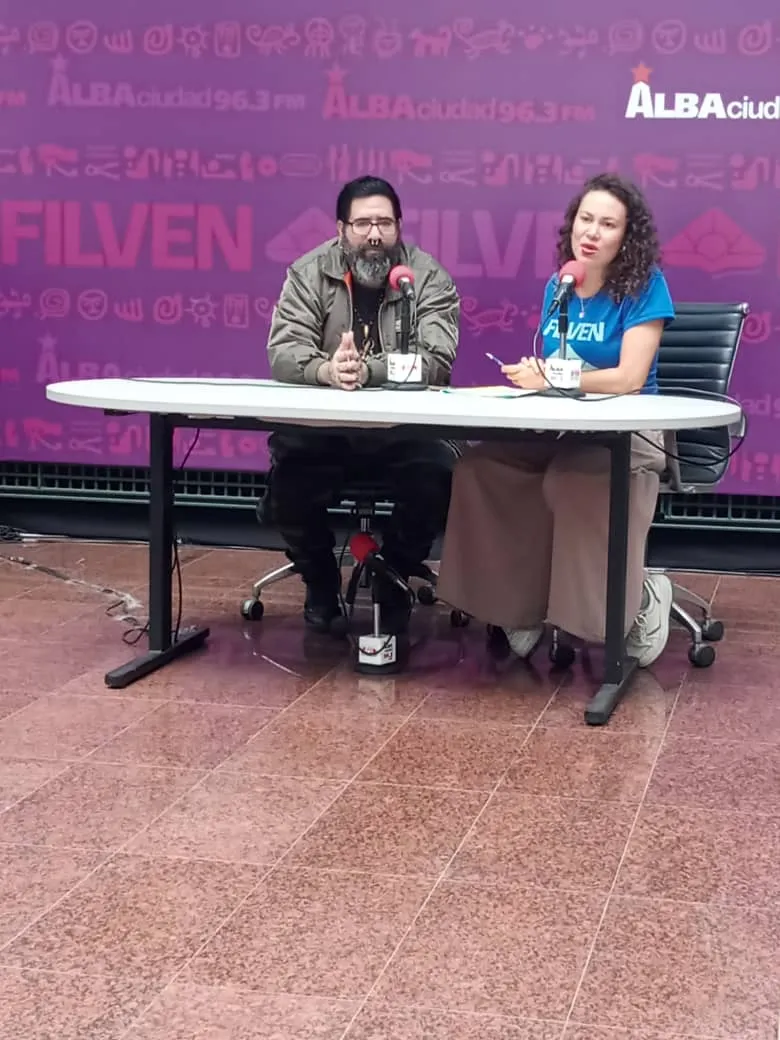
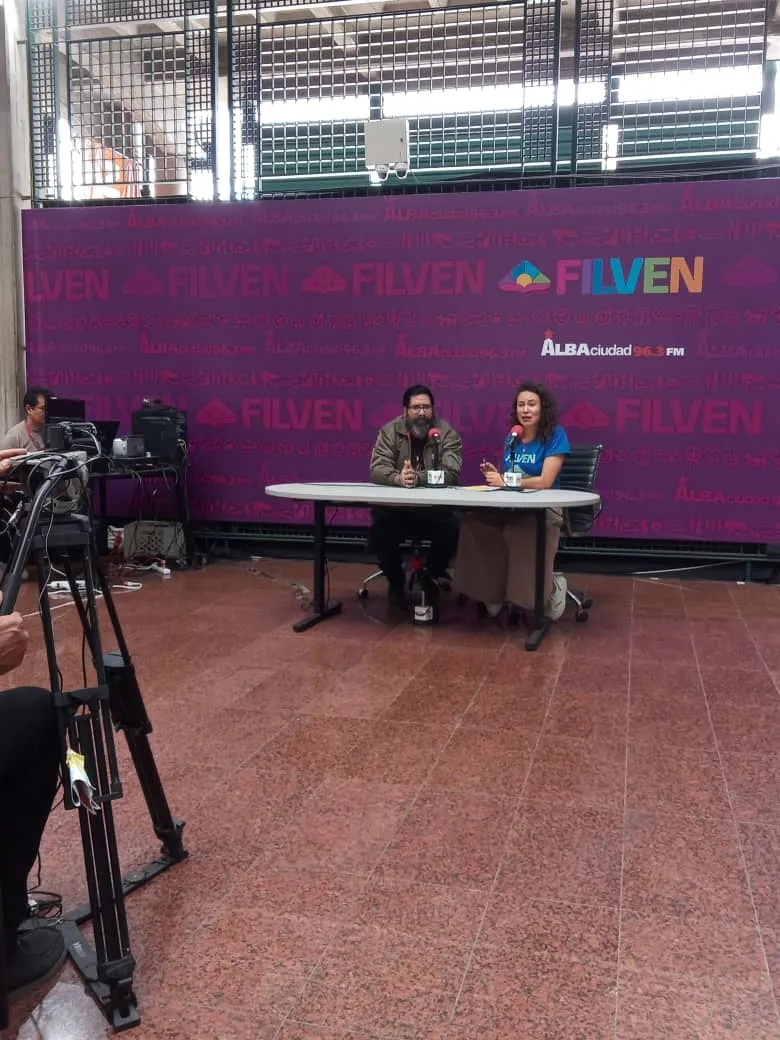
Interview English Translation:
Good afternoon to everyone listening at this hour on 96.3 FM and Canal Cultura Venezuela. From these spaces at the National Art Gallery, I’m back with you—your host, Angie Vélez. This year’s edition of the International Book Fair of Venezuela is taking place not only here but also extending into the Plaza de la Juventud. We’re honoring Egypt as the guest country, and the featured state in this edition is Guayana Esequiba, offering a wide range of activities you’re welcome to attend and enjoy. Once again: National Art Gallery and Plaza de la Juventud.
Right now, I’m joined by Nahu Padilla, with whom we’ll be discussing the axes of Guaicaipuro—a project that forms part of his doctoral thesis. Exactly. So, what will you be presenting, and where and when?
Yes. Well, first of all, thank you so much for the invitation. My name is Nahu Padilla. I’m a visual artist, musician, writer, and I’ve been developing these skills for about 30 years. I’m currently pursuing a PhD in Arts and Culture of the Southern Peoples at Uneartes, and my doctoral thesis focuses precisely on Guaicaipuro’s axes—an artwork in visual arts that also deeply connects with sound and music.
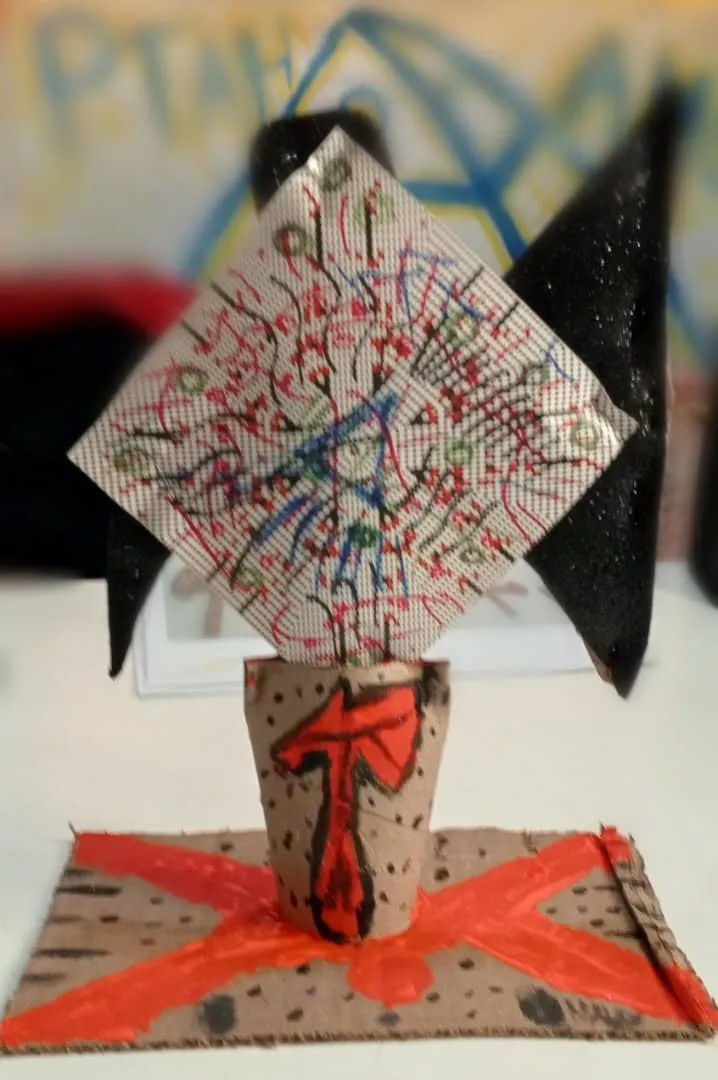
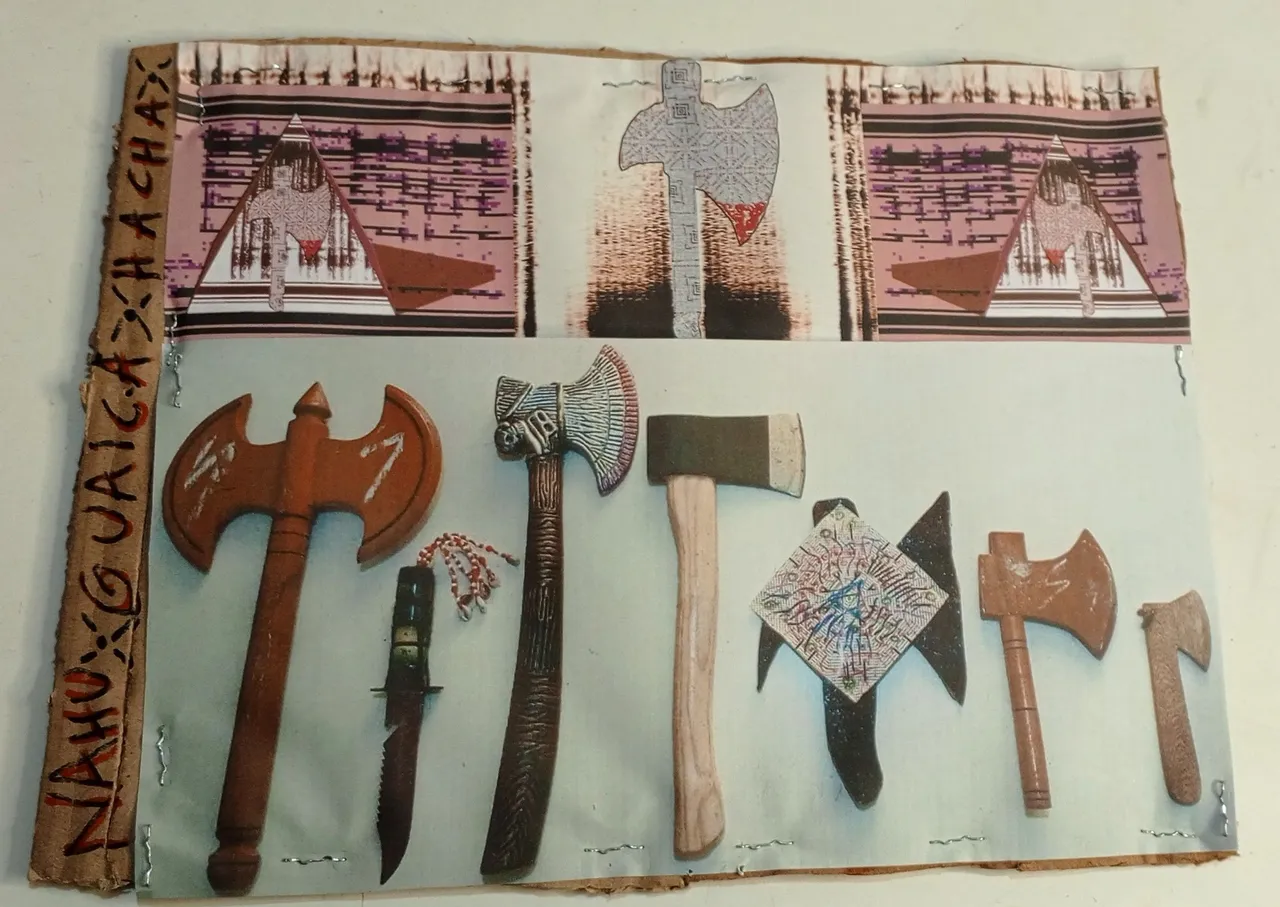
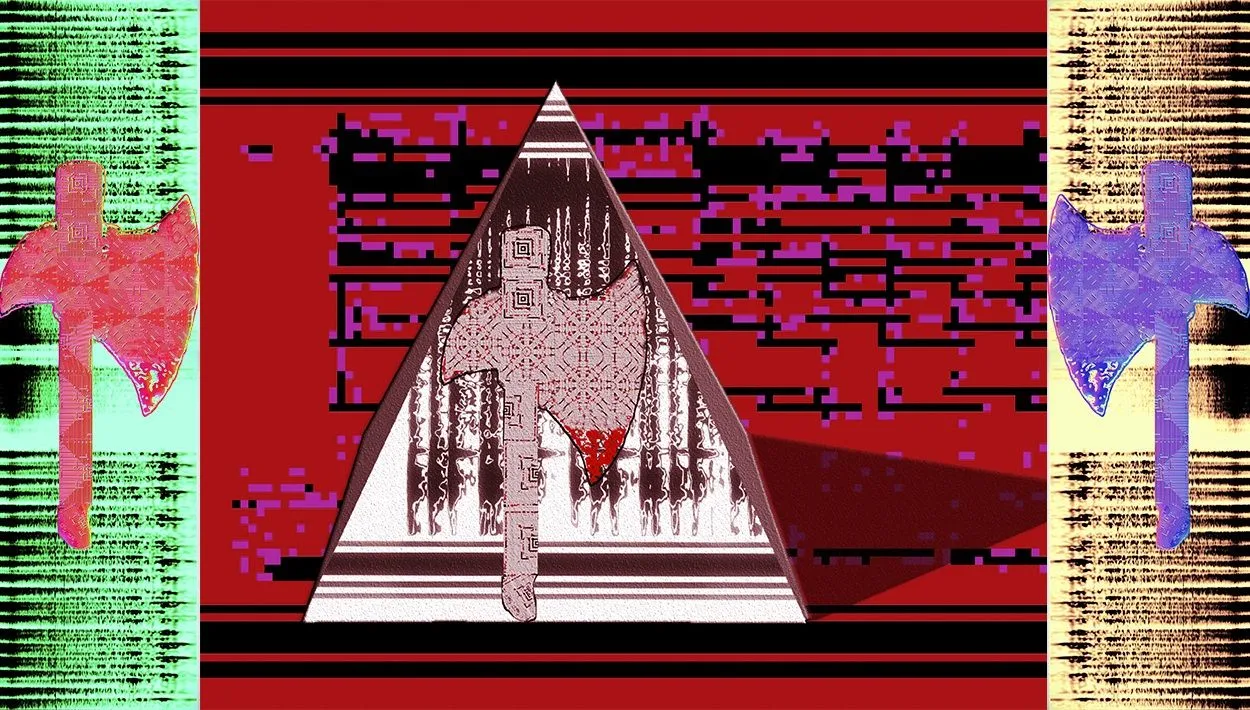
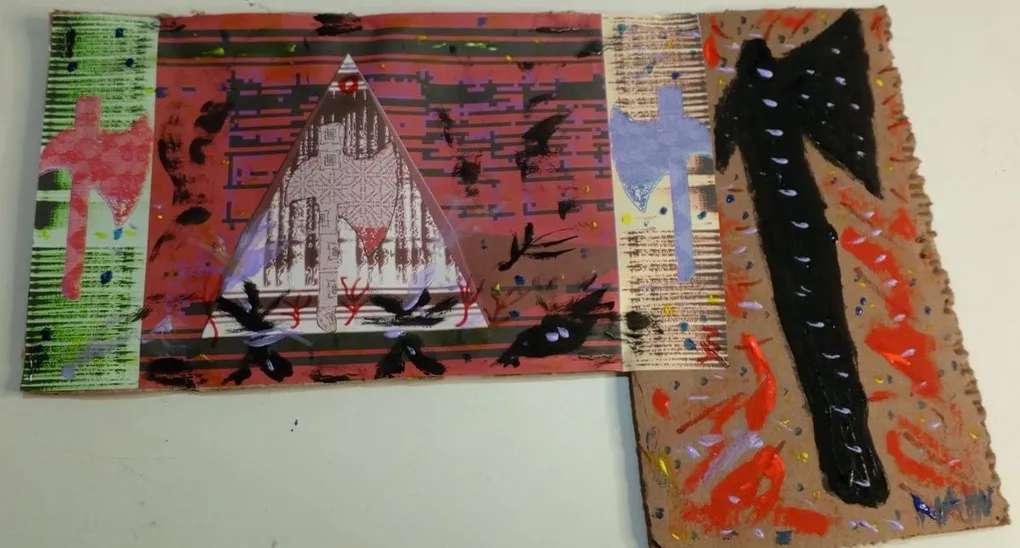
That’s fascinating, especially because you’ve developed a method unique in the world, right?
Yes. Well, it’s strongly connected to literature—specifically to Kandinsky, the well-known Russian painter and writer—and also to cinema. There are concepts from Russian cinema about capturing and sculpting sound and music through a kind of parallelism between musical notes and what a paintbrush can do on canvas. So, a dot might represent a musical note, a line could be like a melody—ideas like that. But how do you translate that into the physical world, into reality?
Well, I spent 25 years working with various computer programs, studying the Python programming language, and researching—because I come from a background in computer engineering, in addition to having studied art and music. I developed a method where a microphone captures and records sound, which is then transferred onto a digital canvas. You configure the brush—its thickness, its color—and simply by making music, you create brushstrokes, something similar to a Jackson Pollock painting—an abstract piece, but generated through sound. That artwork is then printed, and afterward, you can physically intervene on it with acrylics or other materials on canvas. The result is a piece whose foundation is essentially sonic.
And as for how I create that music—I also build a sculpture, since I study sculpture. It’s a piece made up of around 14 cymbals and 16 drums, most constructed from cardboard, equipped with piezoelectric components or other elements that convert acoustic sound into electric signals. It’s been a project many years in the making.
Excellent. We’re speaking with Nahu Padilla. You were telling us about this incredible method—translating music into painting.




Exactly. Since you yourself aren’t the art, how do you ensure this doesn’t remain confined to just one person? Because it’s such a highly interesting method.
Perfect question. Yes. Fortunately, thanks to digital media and several courses I’ve developed on content creation and audiovisual production, I run an audiovisual production company. We’ve created a documentary over an hour long that captures the entire process from scratch—providing a powerful visual record—and it’s received great response on social media.
The doctoral thesis also aims to become a future book, one that can help others develop similar methods using different sounds and instruments. As long as there’s a microphone, anything—even ancient instruments—can “paint.” So it’s quite compelling. And on another level, it also leaves behind a legacy.
https://youtube.com/playlist?list=PLukbPhsUZFUaYK0iPaSKkOntxHvgBGLnE&si=fBhgcCJYfAVnaVnu
As a professor—I’ve just become an art professor at UNEARTE in the visual arts program—I’ve always shown my students different methods and applications beyond the traditional brush, oil, or pencil. I also introduce technological tools and apps, which allow you to create 21st-century contemporary art without necessarily relying on artificial intelligence—especially since AI-generated art often lacks soul, depth, or any real substance. On the other hand, by mastering technological tools and mobile applications, you can fully create meaningful, authentic art without turning to AI.
You’re touching on a very interesting point here—the issue of artificial intelligence. Exactly. How are visual artists currently navigating this new landscape? Well, there are two ways to look at it. Not long ago, we held a course at UNETI on pedagogy and artificial intelligence, focusing precisely on how teachers and artists can approach AI not as an enemy, but as an ally.
One of the most interesting approaches is to use AI only as a sketch—not as a final piece. For example, artists who used to wake up at 2 or 3 a.m. with inspiration—musicians, writers, playwrights, painters—and would jot down their ideas in a notebook… now, those same ideas can be entered into an AI system to generate a first visual draft or textual outline. From there, you can begin developing the work yourself, using that output as a guide. So yes, AI can serve as a helpful tool, much like in any other profession.
But it shouldn’t justify being the final result. Not unless the artwork carries a conceptual intention—a critical perspective or value judgment that you, as the artist, are deliberately adding. For instance, I might mock artificial intelligence by using it to create something, but then accompany it with a manifesto or statement exposing how such technology can be harmful or soulless. From that standpoint, it becomes valid. But as a mere sketch or support tool, it can help speed things up.
Still, take the example of a filmmaker who wants a storyboard: one drawn by human hand still holds far greater value, beauty, and authenticity than one generated by AI. Human creation simply hasn’t been surpassed yet. That’s why, in many cases, handmade work remains more powerful and meaningful.
Excellent. We’re currently speaking with Nahu Padilla, discussing his project The Axes of Guaicaipuro, which forms part of his doctoral thesis. We’ve also explored his unique method of painting sound. Now, Nahu, I’d like to know—how did you arrive at this point in your journey, where you express music through art?
Well, since the mid-1990s, I’ve been deeply involved in music, and I’ve never stopped. I build musical instruments—some of them quite unusual. In fact, I studied sculpture under the late Silvestre Chacón at the Escuela de Artes Plásticas Cristóbal Rojas, and my focus has always been on installations. Installations, for me, are like playful sculptures—pieces that people can touch, interact with, make sounds or noise from, and ultimately use to generate sound recordings, discs, or audio works.
But personally, I’ve always walked that line between sound and visual expression. At the same time, painting—and particularly abstract painting—has always fascinated me, along with indigenous cultures. So, how could I bring these three elements together? My undergraduate thesis, for example, was on Venezuelan indigenous photography, which required me to study anthropology. So, I carry a diverse background, a rich blend of disciplines.
Indigenous music, in particular, offers immense inspiration—there are sacred maracas, sacred flutes—and from those, visual or graphic expressions can emerge: drawings, paintings. There’s a deep connection waiting to be explored.
For those of you watching and tuning in right now—whether through Canal Cultura Venezuela or Alba Ciudad 96.3 FM—who would like to learn more about you, discover your work, or even learn from you: how can they do so?
Well, I mainly have two Instagram accounts they can look up. One is "laneveracreativa", where you can see some of the work produced by my audiovisual production team. And the other one is: PukuMundo. That Instagram handle actually comes from the word "Puku", an ancient term from Mesopotamia, from Sumerian culture—it refers to the very first drum ever created. Why? Because for shamans and wise elders of ancient peoples, our original communities, the heartbeat has always been equal to the beat of the drum. So there’s a sacred connection between the drum, the human heartbeat, humanity, and the spiritual world. All of this ties directly into The Axes of Guaicaipuro.
Why? Because an axe is a symbol of resistance, a symbol of struggle for the peoples of the South. So it’s deeply connected.
Excellent. Nahu, as we begin to wrap up, please tell us: what has this 25th edition of the International Book Fair of Venezuela been like for you?
Spectacular. First, because many of my former professors have been here—people who’ve carried out remarkable work for years, dedicating themselves to linguistics and the study of indigenous mythology. Second, I’ve always been, let’s say, a true admirer of ancient cultures. I’m especially drawn to Egyptian civilization, and being here at the Egyptian pavilion has been an incredible experience. Plus, I actually studied Egyptology at university, so I’ve attended several lectures on the topic—and everything I’ve seen so far has been truly impressive.
I think this is outstanding work. There’s been a full program of 64 talks and conferences of all kinds—different levels, diverse perspectives—and I find it remarkably comprehensive. This kind of effort must continue. Not only should we support book fairs like this one, but also many others that are emerging. We need to show up, participate, and support these spaces—because they belong to us. They are ours. They’re for the citizens, for all of us who live in Venezuela. These are our spaces—like the recently reopened and reimagined National Art Gallery.
Exactly. We’ve been speaking with Nahu Padilla. And with that, we’ve reached the end of our time together. Thank you, and have a wonderful afternoon.
Related Links:
https://www.instagram.com/canalcultura_ve
https://www.instagram.com/albaciudadfm
https://www.instagram.com/nahupuku
https://www.instagram.com/nahupukualienart
https://www.instagram.com/pukumundo
https://www.instagram.com/laneveracreativa
I make this paint at Filven:
Myself at Filven 2025:
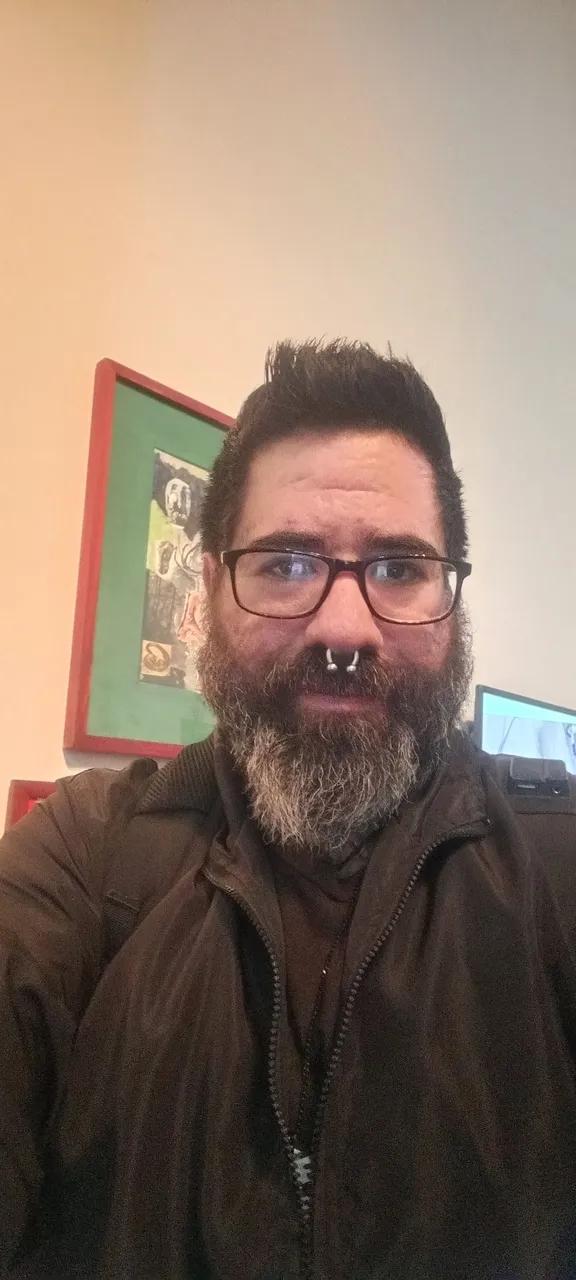
At Filven I had the privilege of giving as a gift one of my works of art to the Consul of the Arab Republic of Egypt in Venezuela Mr. Mohamed Abdelwahab in the framework of the Filven 2025 Fair, held in Caracas, Venezuela and whose country honored this year was the Arab Republic of Egypt.
En el Filven tuve el privilegio de obsequiarle de regalo una de mis obras de arte al Sr Consul de la República Árabe de Egipto en Venezuela Sr Mohamed Abdelwahab en el Marco de la Feria Filven 2025, realizada en Caracas, Venezuela y cuyo país homenajeado este año fue la República Árabe de Egipto.
@nahupuku/time-as-a-brush-movement-as-sound-intersections-between-art-science-and-philosophy-in-the-exploration-of-time-sound-and-materi

With @orimusic
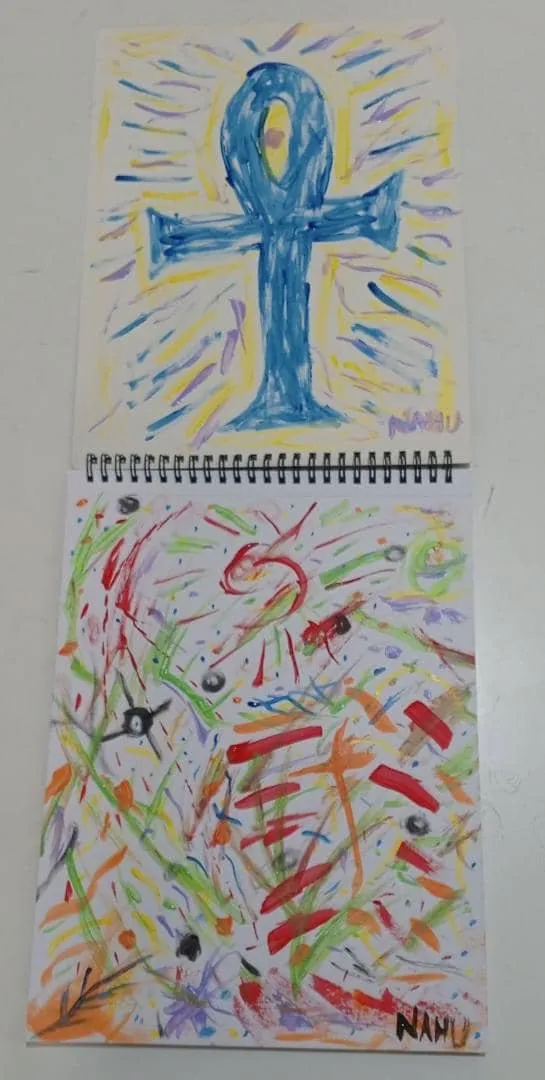
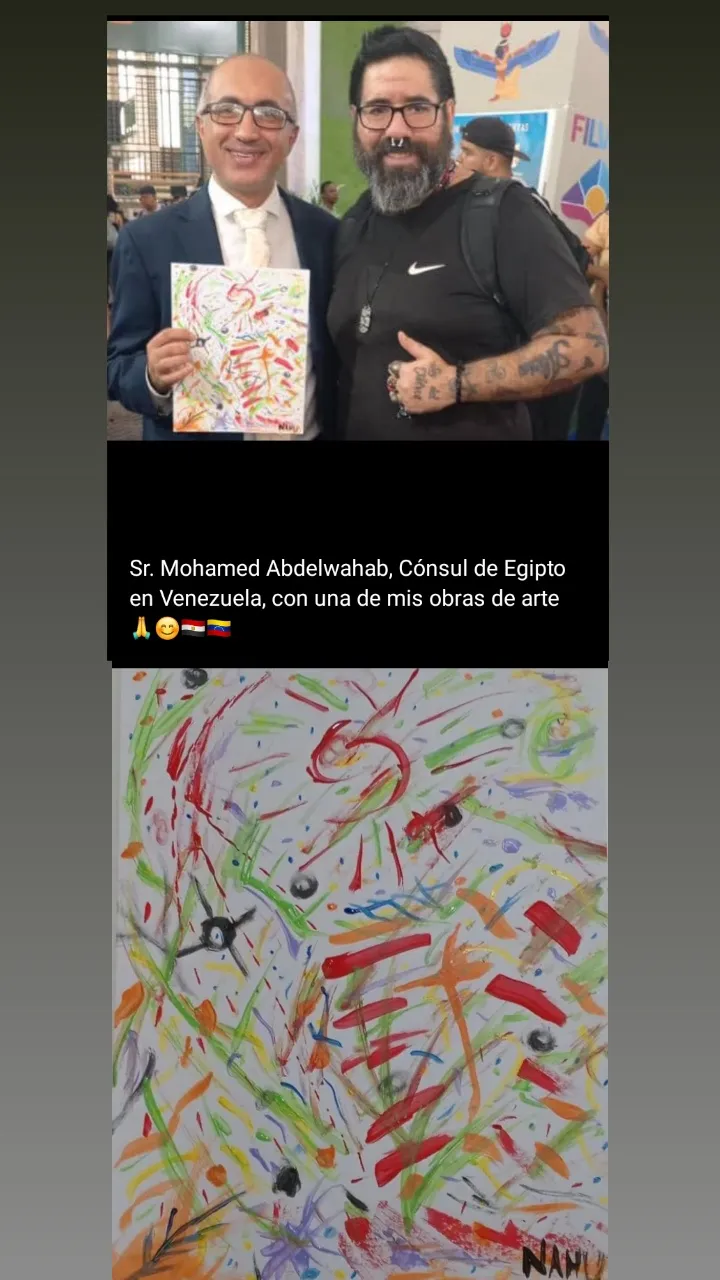



https://www.youtube.com/live/sJlM6BpGkO0?si=-V1qV3M0OMosLFQh

Others Links about my art and process:
https://www.youtube.com/playlist?list=PLukbPhsUZFUaYK0iPaSKkOntxHvgBGLnE
@nahupuku/painting-the-sound-with-my-pukuinstrument-homemade-drumset-2025-by-nahupuku
@nahupuku/painting-the-sound-with-my-pukuinstrument-part-2-ai-desings-2025-by-nahupuku
@nahupuku/my-new-artwork-the-axe-of-guaicaipuro-2025-by-nahupuku
Art Manifest Theory - In english and Spanish:
Pinto bajo una teoría que yo inventé. Un discurso pictórico que bauticé con el nombre del Superfilamento. Son obras de arte abstracto expresionista que tienen movimiento por si mismas.
Cada trazo de mi pincel imita o simula un superfilamento en el espacio microscópico del cosmos que es donde está ubicada la 4ta dimensión.
El Superfilamento es la partícula mas pequeña encontrada por científicos. más pequeña que el átomo.
Así que, en mi opinión y mi visión, toda la materia, la luz y la energía están contenidas en ellos y cada uno de mis trazos lo representan.
Mis influencias pictóricas son Kandinsky, Van Gogh, Pollock y Basquiat y suelo pintar en estado de Trance.
Al pintar los materiales que utilizo generalmente son: Oleo, pintura al frío, acrílicos y una serie de pinceles que me encanta variarlos según el humor o el trance en el cual pinto.
"El Tiempo como Pincel, el Movimiento como Sonido”
Intersecciones entre Arte, Ciencia y Filosofía en la Exploración del Tiempo, el Sonido y la Materialidad.
Esta investigación explora la intersección entre arte, ciencia y filosofía a través de una práctica artística multidisciplinaria que fusiona música, tecnología y artes visuales. Inspirado por teorías decoloniales y la física cuántica, el proyecto busca desafiar las fronteras tradicionales del tiempo, el espacio y la materialidad. Central en esta exploración está la figura de Guaicaipuro, un líder indígena que resistió la colonización en Venezuela, reimaginado como un símbolo de soberanía y empoderamiento cultural. La obra no solo rinde homenaje a la resistencia histórica, sino que también propone un diálogo entre el conocimiento ancestral y la innovación tecnológica contemporánea.
El proyecto se inspira en los movimientos de vanguardia experimental rusa, particularmente en el sintetizador ANS desarrollado por Yevgeny Murzin, que convertía imágenes impresas en sonido. Este legado es evidente en herramientas contemporáneas como Phonopaper, que traduce sonidos en códigos visuales. Además, la obra incorpora la teoría del color de Alexander Scriabin, la sinestesia de Wassily Kandinsky y el concepto de "esculpir el tiempo" de Andrei Tarkovsky. Estas influencias convergen para crear un lenguaje artístico híbrido que trasciende las fronteras culturales y temporales.
Proceso Creativo y Técnicas: El proceso creativo implica capturar sonidos percusivos utilizando el Pukuinstrumento, una batería casera, y traducirlos en códigos visuales mediante herramientas digitales como Phonopaper. Estos códigos luego se imprimen y se intervienen manualmente utilizando técnicas plásticas tradicionales como pintura, collage y escultura. Esta fusión de lo analógico y lo digital crea un diálogo dinámico entre elementos tangibles e intangibles, desafiando nociones convencionales de permanencia y efimeridad.
Dimensiones Políticas y Culturales: Desde una perspectiva decolonial, la obra critica las narrativas hegemónicas y reconstruye identidades subalternas. Al reificar a Guaicaipuro como un héroe decolonial, el proyecto invita a los espectadores a reflexionar sobre cómo las heridas coloniales aún resuenan en las sociedades contemporáneas. La obra actúa como una "reprogramación estética", transformando sonidos audibles en gritos visuales de justicia y emancipación. Este enfoque se alinea con el concepto de "epistemologías del Sur" de Boaventura de Sousa Santos, que enfatiza la importancia de recuperar sistemas de conocimiento marginados.
La Teoría del Superfilamento: Una contribución central de esta investigación es la teoría del "Superfilamento", que postula que cada trazo de pincel representa un filamento microscópico vibrante que contiene toda la materia, la luz y la energía del universo. Este concepto científico-artístico desafía la separación del tiempo y el espacio, proponiendo en su lugar una ontología relacional donde múltiples realidades coexisten simultáneamente. El superfilamento sirve como un mapa metafórico del cosmos, visualizando las vibraciones fundamentales del universo.
Relatividad del Tiempo y Paradoja de Andrómeda: La paradoja de Andrómeda, que destaca la relatividad de la simultaneidad dependiendo del marco de referencia del observador, resuena profundamente en esta investigación artística. Al conectar eventos históricos (por ejemplo, la resistencia de Guaicaipuro) con la creación multimedia contemporánea, el proyecto desafía nociones clásicas de tiempo y causalidad. Herramientas como Phonopaper permiten a los espectadores experimentar diferentes "marcos de referencia", alterando su percepción de la simultaneidad y la realidad.
Hacia una Nueva Estética del Sonido: Este proyecto propone una nueva estética del sonido, donde cada golpe percusivo se convierte en una obra multimedia. Al materializar el sonido en formas visuales y plásticas, la obra invita a los espectadores a reflexionar sobre la naturaleza efímera del tiempo y la permanencia de la memoria. También explora las fronteras entre lo audible, lo visible y lo tangible, creando experiencias inmersivas que trascienden las fronteras disciplinarias.
Un Llamado a la Experimentación: En última instancia, este manifiesto no es una conclusión definitiva, sino una invitación abierta a la experimentación interdisciplinaria. Al tender puentes entre la música, la tecnología y las artes visuales, el proyecto desafía las barreras entre lo tangible y lo intangible, lo histórico y lo moderno, lo individual y lo colectivo. Este es el arte del siglo XXI: un puente entre lo primitivo y lo futurista, donde el movimiento pinta el sonido y el tiempo se convierte en nuestro lienzo infinito.
All pictures of my property / Todas las fotografias de mi propiedad.

PukuEdición by me, 2025 - NNR
PukuNetworks:

Bendiciones y gracias por ver mi post
Blessings and thanks for watching my post
